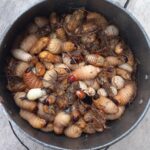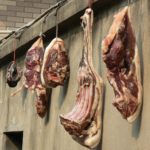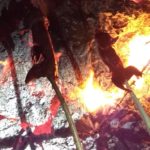The Hadzabe people eagerly collect stingless bee honey all year long. They do this destructively by cutting open the hives in tree hollows, and both honey and brood are harvested and eaten. Foraging on these insects has not significantly affected the number of stingless bees in the Yaeda South area until now (June 2024). This can be felt because you are constantly swarmed and pestered by this and other species of sweat bees.
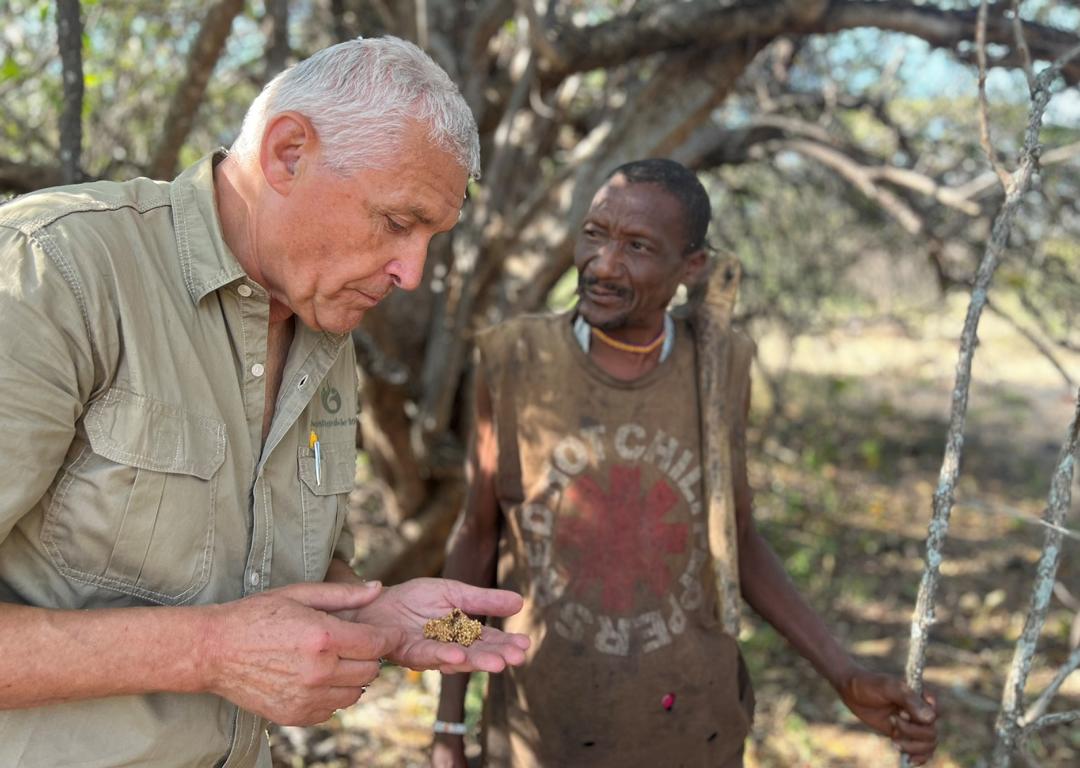
Stingless bee species on Hadza land
Stingless bees, also known as ‘mopane bees’, belong to the genus Trigona. They are tiny and only about 3 mm long. These bees cannot sting because their stings are rudimentary and useless as defense weapons. They nest in hollow tree trunks and holes in walls, rocks, or the ground.
According to Daudi Peterson in his book The Light of a Million Fires, the Hadzabe know and can name six species of Stingless bees in their area. These are:
- Kanowa, Trigona ruspolii (Synonym: Hypotrigona ruspolii (Magretti, 1898))
- Tsunako, Trigona gribodoi (Syn.: Hypotrigona gribodoi (Magretti, 1884))
- Bambahau, Lestrimellitta cubiceps (Syn.: Cleptotrigona cubiceps (Friese))
- N!ateko, Trigona erythra junodi (Syn.: Axestotrigona erythra (Schletterer, 1891))
- Mulangeko, Trigona beccarii (Syn.: Meliponula beccarii (Gribodo, 1879))
- Lulindi, Trigona denoiti (Syn.: Trigona denoiti katangensis (Cockerell, 1934))
Stingless bee honey and brood collection
When walking in their surrounding Vachelia-Commiphora Bushland biome, a Hadza man saw the trumpet-shaped entrance funnel of a Trigona Stingless bee species.
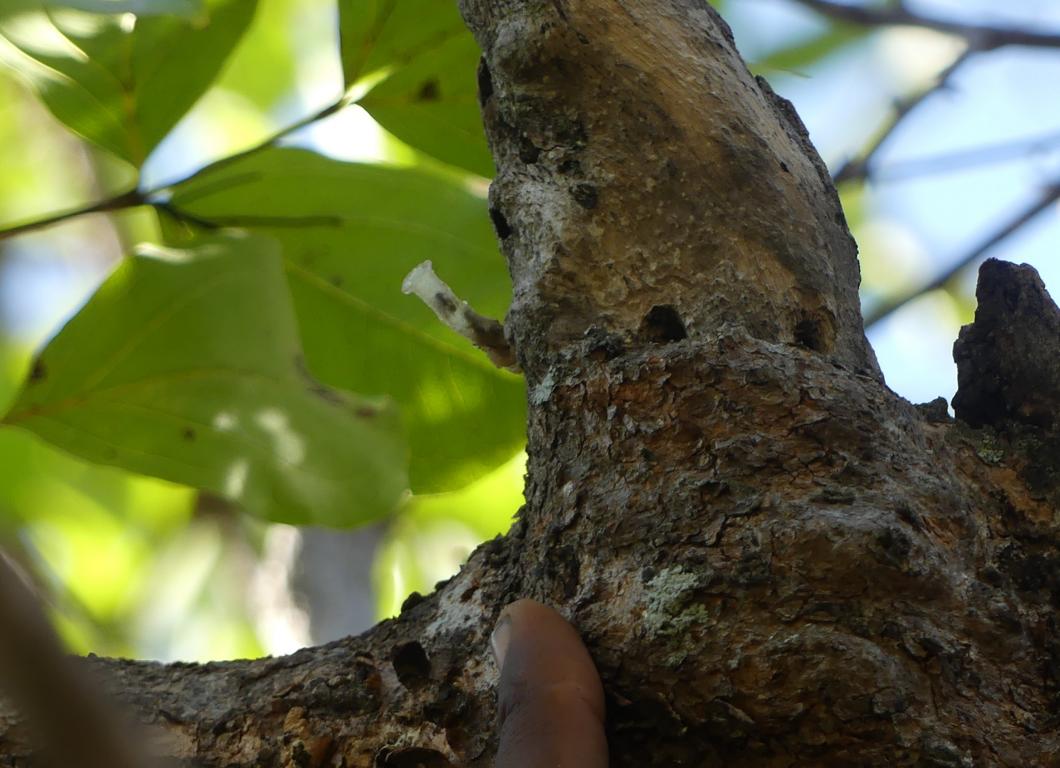
This entrance funnel is made of cerumen, a mixture of light wax and resins. At night, it is closed with a temporary plug of wax and resin. It keeps animal predators out, but this conspicuous structure also alerts predatory humans that there is honey there. All the Hadzabe with us pointed to the tiny funnel protruding from the tree stump. One of the Hadzabe men immediately climbed the tree – and I followed him. Together, we hacked the Stingless bee nest open.
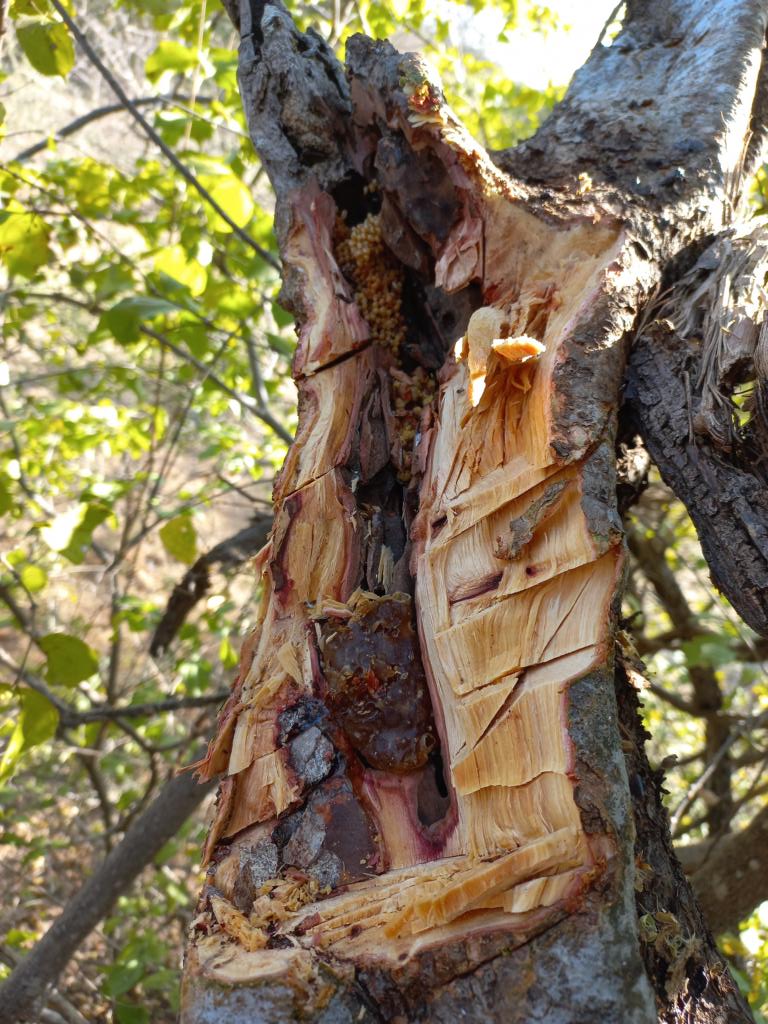
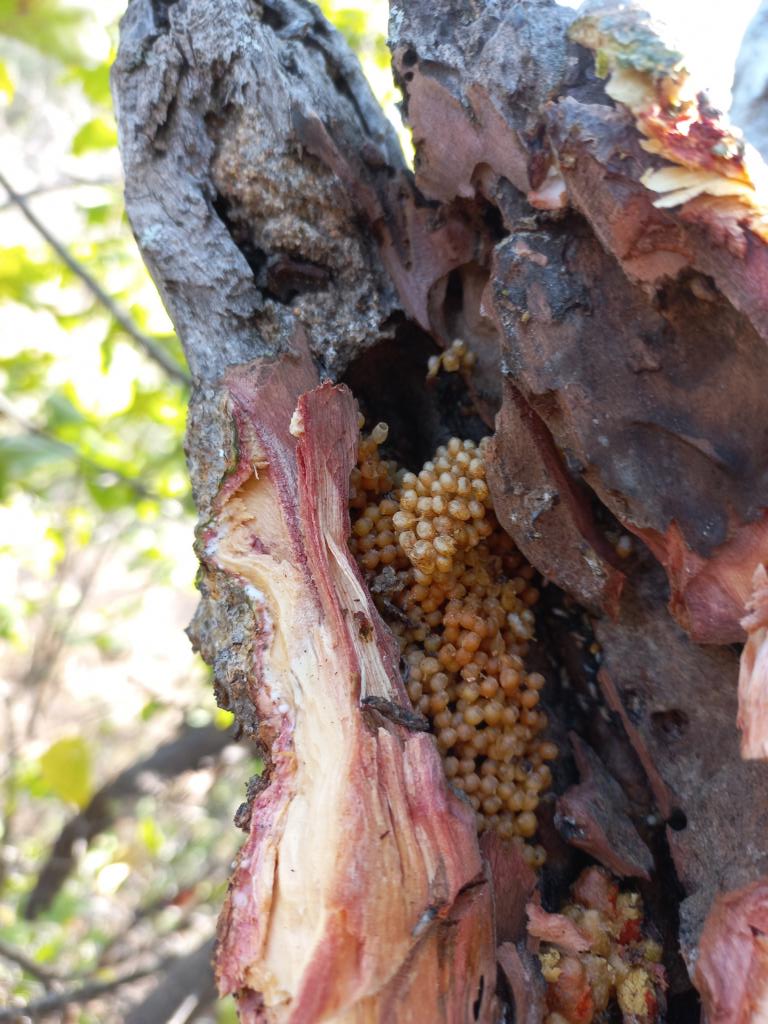
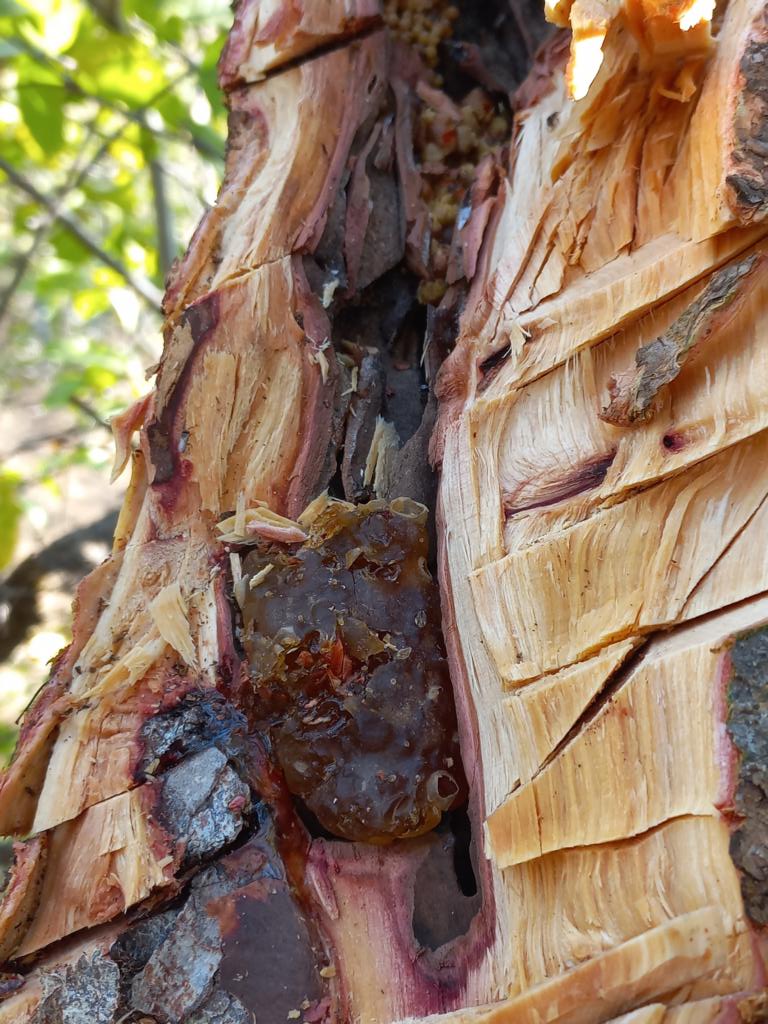
The nest was ready to be harvested, with two large honey pods and a clump of brood cells. ‘Large’ is a relative term; in connection with Stingless bees, it means a length of about 3’’ / 7.6cm. Hadzabe people relish both the honey and the brood of these stingless bees.
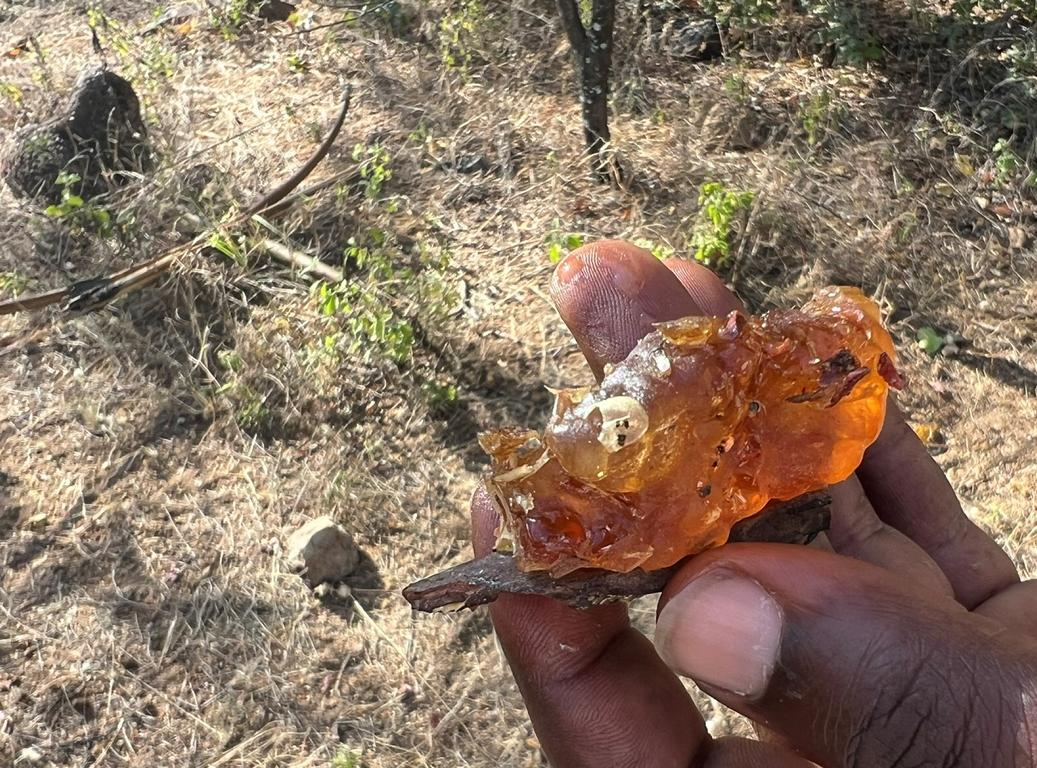
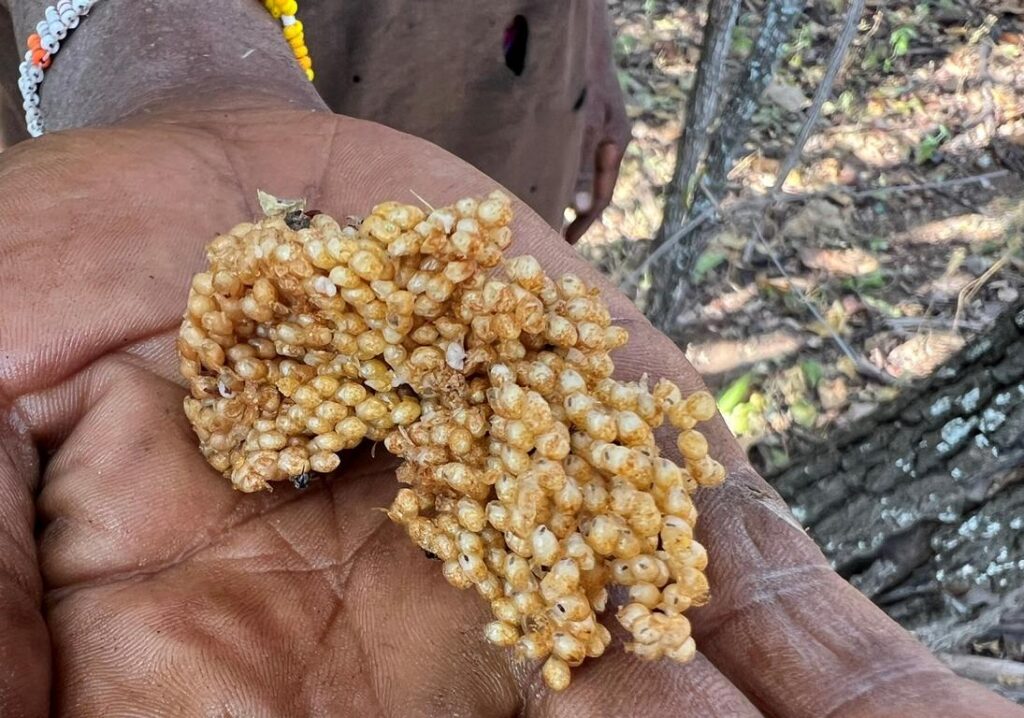
Which Stingless bee species did we find?
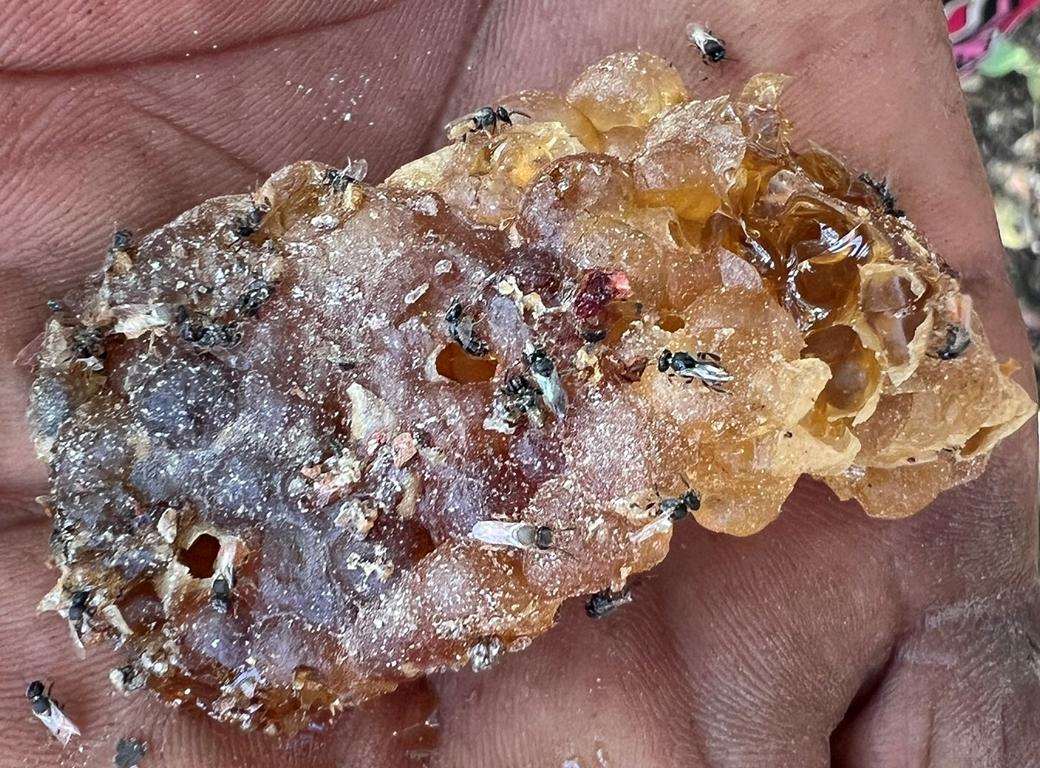
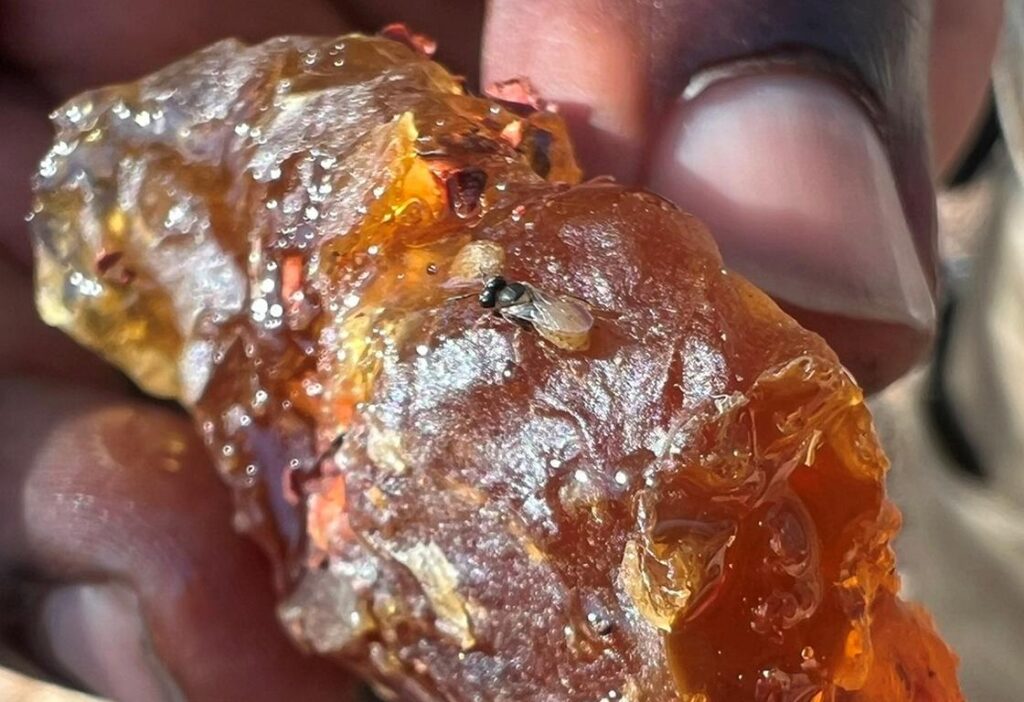
Only after scrutinizing the photos was it possible to determine the correct species of Stingless bees we found. We believe these were ‘Tsunako’ bees, Hypotrigona gribodoi (Magretti, 1884). These bees can be found in sub-Saharan African wood- and bushland-like biomes. Their honey is light and watery in the pods and tastes pleasantly and slightly sour. We also saw a virgin queen bee around the honey pods. Her white and slightly swollen abdomen was easily visible.
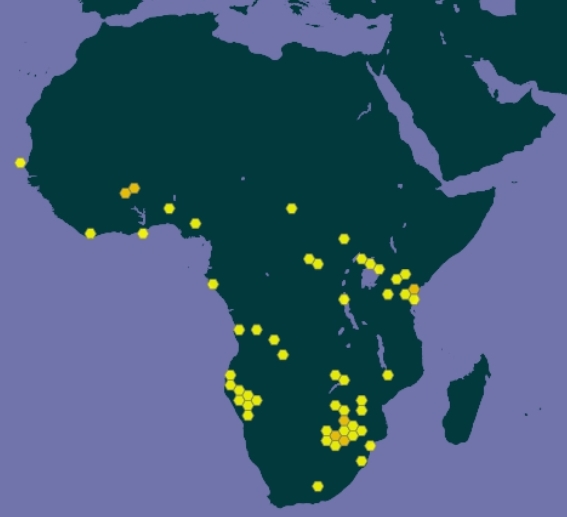
An alternative technique for finding Hypotrigona gribodoi Stingless bees in Southern Africa
The Zulus in Natal will find the nests of Trigona gribodoi by placing a freshly cut branch of a Tamboti tree (Spirostachys africana) in the sun in a clearing. The bees gather the latex welling from the cut and bruised parts of the branch and use it to make their cerumen. They return repeatedly to collect more latex, and their flight path betrays the location of their nest.
Non-destructive collection of Stinging bee honey and brood
In many parts of Tanzania, stingless bee honey is mainly obtained through honey hunting, which employs destructive methods. Domestication of stingless bees (meliponiculture) is well established in the northern highlands of Tanzania, where most beekeepers domesticate stingless bees. According to this source, 74% of all beehives were stingless bee hives in this region.
There, meliponiculture has a long history of managing stingless bees for their honey, which has putative medicinal value.
Characterization of stingless bee honey
Stingless bee honey has a much lower sugar content than Apis mellifera (Honey bee) honey. Various studies have reported values ranging from 81 to 85 °Brix for Apis mellifera honey. Hypotrigona gribodoi honey, on the other hand, only has about 74 ° Brix total sugars.
One reason for this disparity may be the breakdown of sugars in stingless bee honey due to microbial activity. Storage time and conditions also affect the sugar content in stingless bee honey, whereby honey stored for longer periods at high temperatures has reduced sugars compared to fresh samples due to fermentation.

Lessons learned from Stingless bee honey:
- Stingless bee honey and brood are always collected destructively by Hadza people.
- There are six different species of Stingless bees known to Hadzabe.
- The composition of stingless bee honey differs significantly from that of Apis mellifera honey.
Additional information
My book ‘Hadzabe Survival Skills‘ offers more skills, knowledge, tools, and techniques for the Hadzabe people’s life in their natural environment. It is available on Amazon.com and Amazon’s regional websites.
Further readings about Bees on this website:
Alternative beehives in D.R. Congo
Improvised protective equipment for beekeepers
Wax extraction from honeycombs
Sweat bees – not a danger, but a nuisance
Collecting honey in a rock crevice in Vietnam
.



